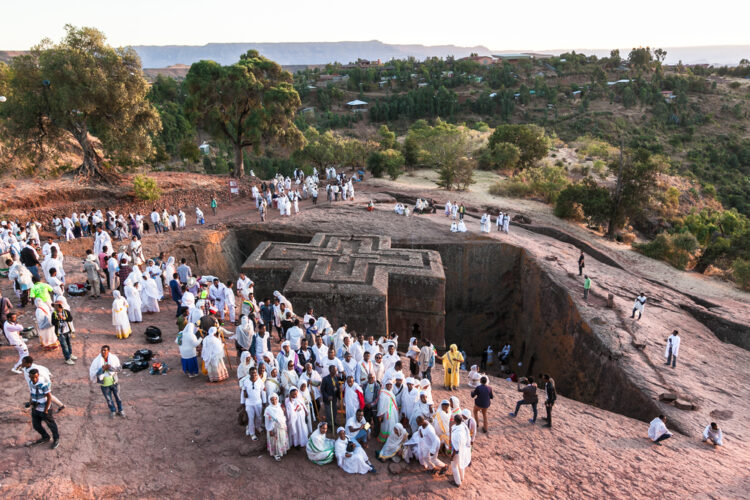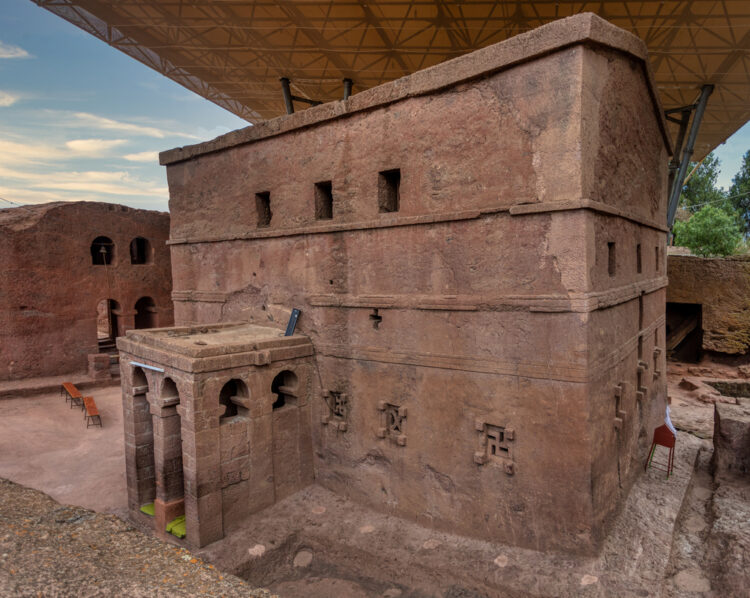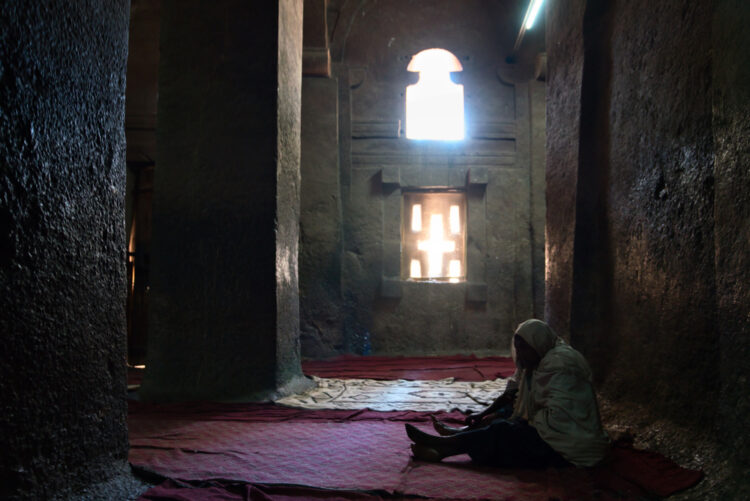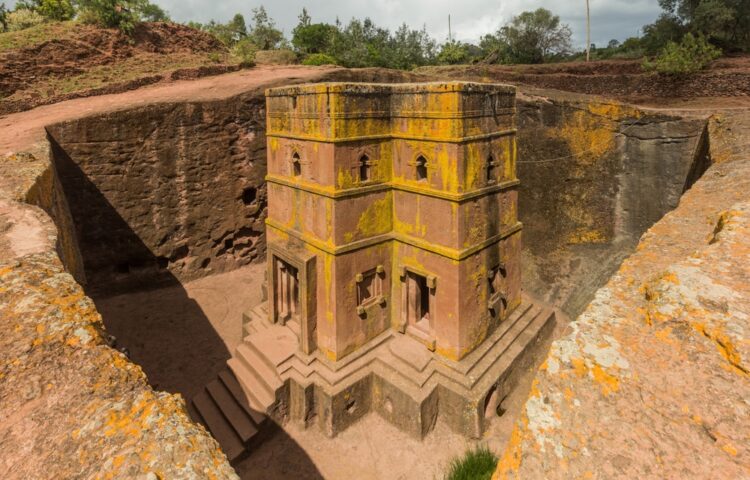In the heart of Ethiopia’s mountainous region of Amhara stand eleven Coptic Christian churches carved out of solid rock 800 years ago. This UNESCO World Heritage site attracts pilgrims and visitors from around the world, eager to witness this amazing architectural achievement built by the ancient Ethiopian Orthodox Church. Lalibela is located 370 miles north of Addis Ababa in the Amhara Region, at an altitude of 8,200 feet.
The history of Lalibela dates back to the 12th century when King Lalibela set out to construct a new holy land after Muslim conquests halted Christian pilgrimages to Jerusalem. The king’s vision was to create a sacred space that would serve as a substitute for the holy places of Jerusalem and Bethlehem. The churches have remained in use for services to this day.

The churches are divided into two main groups:
To the north:
- Biete Medhani Alem (House of the Saviour of the World)
- Biete Mariam (House of Mary)
- Biete Maskal (House of the Cross)
- Biete Denagel (House of Virgins)
- Biete Golgotha Mikael (House of Golgotha Mikael)
To the south:
- Biete Amanuel (House of Emmanuel)
- Biete Qeddus Mercoreus (House of St. Mercoreos)
- Biete Abba Libanos (House of Abbot Libanos)
- Biete Gabriel Raphael (House of Gabriel Raphael)
- Biete Lehem (House of Holy Bread)
The eleventh church, Biete Ghiorgis (House of St. George), stands isolated from the others but is connected by a network of trenches.

What sets these churches apart is the unique manner in which the Ethiopians constructed them. Instead of using traditional building methods, the craftsmen of Lalibela chiseled the churches out of solid blocks of rock. The process involved painstakingly carving out doors, windows, columns, floors, and roofs from the living rock, creating structures that seem to defy the laws of physics. The sheer scale of this undertaking, these ancient structures carved from the very earth itself, is hard to fathom.
The churches are not only feats of engineering but also of artistic expression. Biete Medhani Alem, believed to be the largest monolithic church in the world, boasts five aisles, while Biete Ghiorgis is renowned for its remarkable cruciform plan. The interiors of several churches are adorned with intricate mural paintings. Four of the churches are free-standing monoliths, while the other seven share a wall with the mountain from which the craftsmen carved them with tools no more sophisticated than hammers and chisels. The workers built the churches working from the top, subtracting the rock as they carved out the interior spaces.

The site of Lalibela is a complex network of drainage ditches, trenches, and ceremonial passages. Some of these passages lead to hermit caves and catacombs, offering a glimpse into the ascetic life of the monks who once inhabited the area. The village of Lalibela, situated near the churches, is characterized by its distinctive two-story round houses, known as Lasta Tukuls. Constructed from local red stone, these dwellings add to the unique character of the region and serve as a reminder of the long-standing connection between the churches and the local community.
For centuries, the rock-hewn churches of Lalibela have been a focal point of pilgrimage for Coptic Christians. The spiritual significance of the site cannot be overstated, as it represents a physical manifestation of the faith and devotion of generations of believers. The churches serve as a powerful symbol of the resilience and endurance of Ethiopian Christianity, having withstood the test of time and the challenges posed by historical events.
UNESCO listed Lalibela as a World Heritage site in 1978. As a UNESCO World Heritage site, the rock-hewn churches of Lalibela are recognized for their unique artistic achievement, showcasing the skill and creativity of their creators in the execution, size, and variety of their forms


